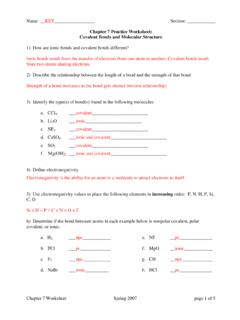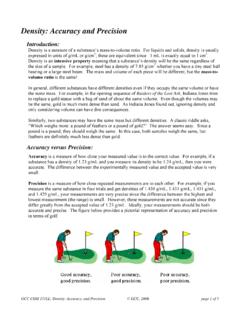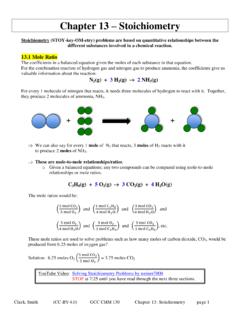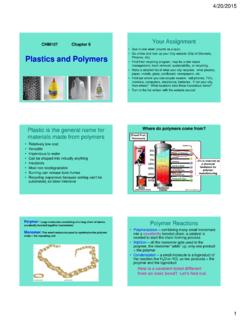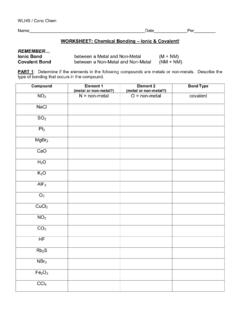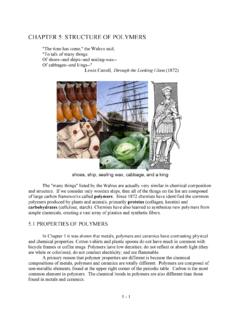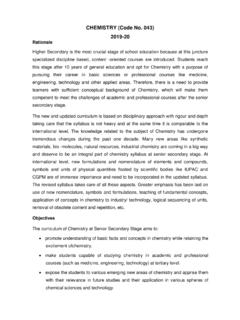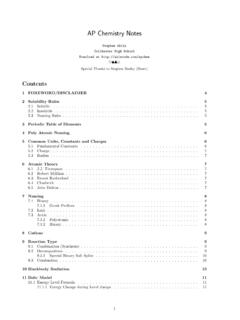Transcription of Practice Problems H S SO CH Br HCN
1 CHM 130 Chapter 12 page 1 of 4 Practice Problems 2. Draw the Lewis dot structures for each of the following molecules: a. H2S c. SO3 b. CH2Br2 d. HCN 3. Draw the Lewis dot structure for each of the following polyatomic ions: a. NH4+ c. PO4 3 b. NO3 d. CO32 4. For the following molecules or ions (where the central atom is underlined): i. Draw the Electron dot structure. ii. Determine the shape of the molecule. iii. Determine the approximate bond angles. a.
2 CH2F2 b. OF2 CHM 130 Chapter 12 page 2 of 4 c. phosphite ion, PO3 3 5. For each of the bonds below: i. Use delta notation ( and ) to indicate which atom is more electronegative, and ii. Use an arrow to point from the less electronegative atom to the more electronegative atom. C Cl N O H O 6. Identify the type of bond described for each of the following as ionic, polar covalent, nonpolar covalent, or metallic.
3 _____ i. The C O bonds in CO2. _____ iv. The C C bonds in C3H8 _____ ii. The bonds in F2. _____ v. The bonds in Ba. _____ iii. The bonds in K2O. _____ vi. The bonds in H2O. 7. Determine whether the following five molecules are polar or nonpolar: CO2: H2O: SO3 CCl4 CHCl3HS CHM 130 Chapter 12 page 3 of 4 Answers 2. 3. 4. AB4, tetrahedral, AB2E2, bent, < AB3E, trigonal pyramid, < CHM 130 Chapter 12 page 4 of 4 5.
4 C-Cl N O H O 6. _polar covalent_ i. The C O bonds in CO2. nonpolar covalent_ iv. The C C bonds in C3H8 _nonpolar covalent_ ii. The bonds in F2. metallic__ v. The bonds in Ba. _ionic_ iii. The bonds in K2O. _polar covalent_ vi. The bonds in H2O. 7. CO2 is nonpolar because the two polar bonds are equal and opposite so cancel out H2O is polar because the bonds are not opposite and don t cancel out SO3 is nonpolar because the bonds are all the same and cancel out, the outer atoms all the same CCl4 is nonpolar because the bonds are all the same and cancel out, the outer atoms all the same CHCl3 is polar because the bonds are not the same and don t cancel out, the outer atoms are different
